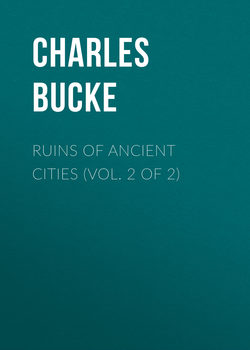Читать книгу Ruins of Ancient Cities (Vol. 2 of 2) - Charles Bucke - Страница 4
NO. IV. – NAUPLIA
ОглавлениеThis town, now called Napoli di Romania, is situated along the foot of the rocky promontory, which projects into the sea, at the head of the gulf of Napoli. Its walls were built by the Venetians.
Ancient Nauplia, which is said to have been built by Nauplius, absurdly called the son of Neptune, became the chief naval arsenal of the Argives. Even so early as the time of Pausanias, however, it had become desolate; only a few remains of a temple, and of the walls, then existing. Its modern history is rather interesting.
The Venetians obtained possession in 1460. In 1495 it surrendered to Bajazet, but was again taken by the Venetians, under Morozini, in 1586, after a month’s siege, and became the head-quarters of that nation, in the Morea. In 1714, it was treacherously given up to Ali Coumourgi, and was the seat of Turkish government, and residence of the Pasha of the Morea; till Tripolizzi was selected as being more central; when it became subject to the Bey of Argos. The crescent remained uninterruptedly flying on this fortress, till the 12th of December 1822, when it surrendered to the Greeks, after a long and tedious blockade; the Turkish garrison having been reduced to such a state of starvation, as to feed on the corpses of their companions. In 1825, Ibrahim Pasha made a fruitless attempt to surprise the place; and it has been the strong-hold of the Greeks in their struggle for liberty. In April, 1826, the commission of government held their sittings here; but were obliged to retire to Ægina, on account of civil dissentions, and two of the revolted chiefs being in possession of the Palamadi. During the presidency of Capo d’Istrias, who always resided, and was assassinated in the town, it again became the seat of government; and on the 31st of January, 1833, Otho, Prince of Bavaria, arrived here, as first king of restored Greece.
The strength of Napoli is the citadel, which is called the Palamadi, over whose turreted walls a few cypresses raise their sombre heads. It stands on the easternmost and highest elevation of the promontory, and completely overhangs and commands the town. To all appearance it is impregnable, and, from its situation and aspect, has been termed the Gibraltar of Greece. It is seven hundred and twenty feet above the sea; and has only one assailable point, where a narrow isthmus connects it with the main land; and this is overlooked by a rocky precipice.
Mr. Dodwell made fruitless inquiries in respect to the caves and labyrinths near Nauplia, which are said to have been formed by the Cyclops; but a minute examination is neither a safe nor easy undertaking. “The remains that are yet unknown,” says he, “will be brought to light, when the reciprocal jealousy of the European powers permits the Greeks to break their chains,19 and to chase from their outraged territory that host of dull oppressors, who have spread the shades of ignorance over the land that was once illuminated by science, and who unconsciously trample on the venerable dust of the Pelopidæ and the Atridæ.”
Nauplia is a miserable village; the houses have nothing peculiar about them, but are built in the common form of the lowest habitations of the villages of France and Savoy. The inhabitants are indolent. “The indolence of the Napolitans,” says M. La Martine, “is mild, serene, and gay – the carelessness of happiness; while that of the Greek is heavy, morose, and sombre; it is a vice, which punishes itself.”20
19
This was written in 1806, and published in 1819.
20
Pausanias; Dodwell; La Martine.
